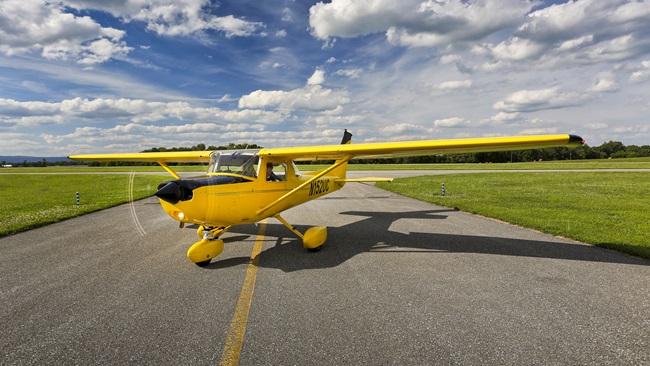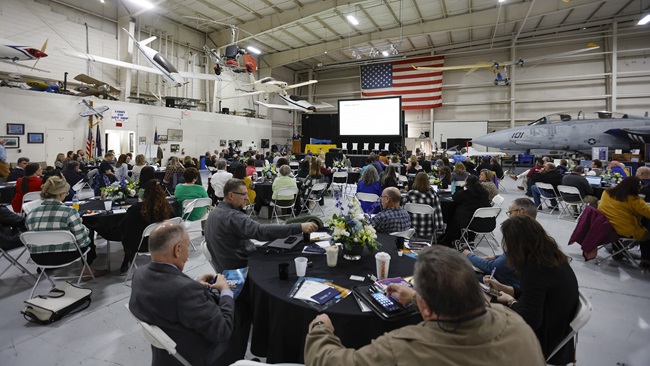You can fly
Rebuilding our industry, one pilot at a time
AOPA staff report
Photography by Chris Rose
It’s 9:15 a.m. on Wednesday and Katie Pribyl is giving everyone in the room high-fives. The Sedona Flying Club in Sedona, Arizona, has begun operations with a leased Piper Warrior, making it the twentieth club AOPA has helped start this year. It’s the first week of October and with this latest club the year’s goal can be checked off as completed.

This meeting is particularly joyous—although each of the group’s Wednesday “scrums” seem to include some sort of celebration. The meetings are the weekly status check-in for a team at AOPA dedicated to one goal: turning around the decline of the pilot population. Part sales meeting, part pep talk, these 30-minute sessions encapsulate the challenges and successes of efforts to reverse decades of decline in general aviation.
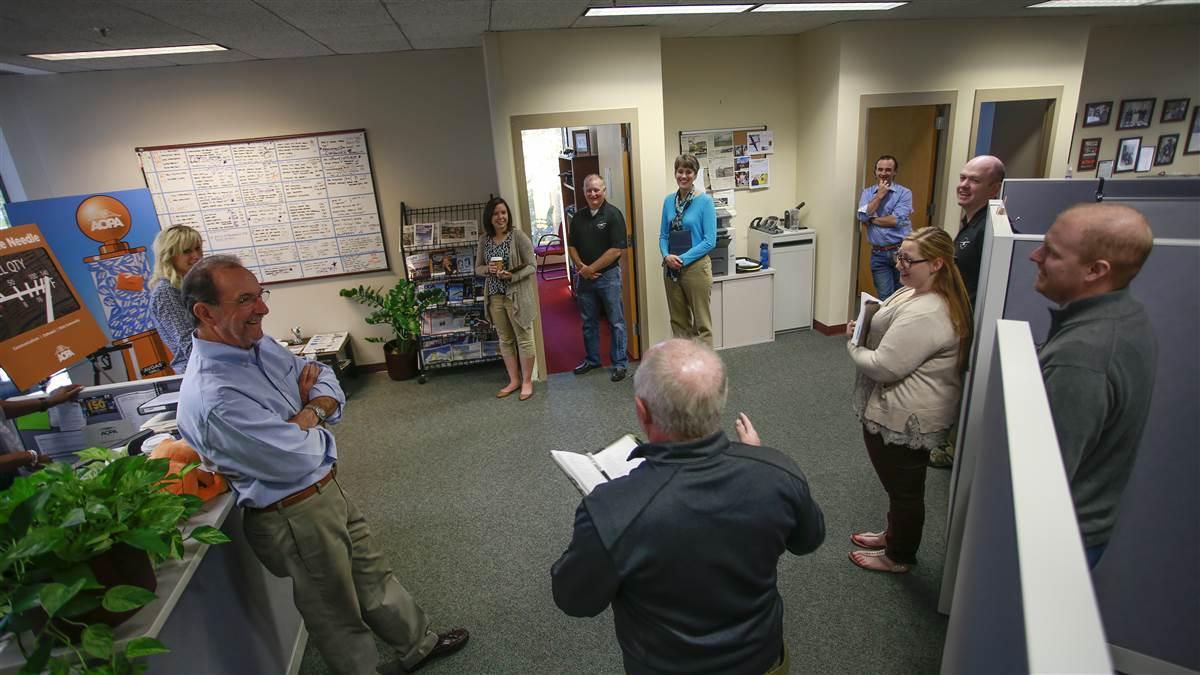
Pribyl said You Can Fly is different from other efforts to reverse the shrinking pilot population because it is a collection of targeted programs, each aimed at a different stage of the pilot lifecycle. “We’re not putting all our eggs in one basket,” she said. “There’s no one reason that fewer people are flying, and there’s no one solution that will fix it. That’s why we’re tackling this challenge on many fronts, and why we’re constantly measuring and evaluating our results.”
Each You Can Fly program targets a separate and distinct problem: getting young people interested in aviation, the recruitment and retention of student pilots, getting pilots to form a strong bond in the community, and bringing back those who have fallen through the cracks. This multi-channel approach, along with a healthy dose of business-backed analytics, is new, and AOPA is deeply committed to getting meaningful results.
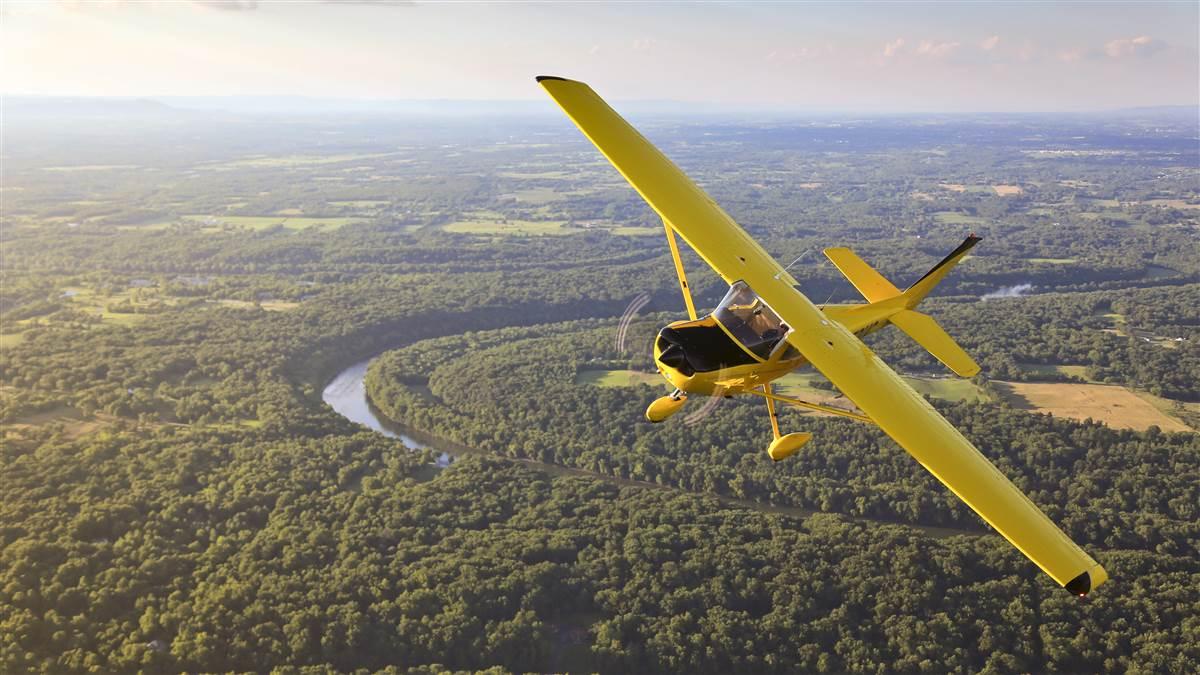
High school
Exposing young people to aviation, especially potential careers in aviation, is one way to grow the community from the ground up. Aviation-related topics are a natural fit for today’s STEM-based (science, technology, engineering, and math) approach to learning, an approach designed to prepare students for jobs in a high-tech economy. Some high schools already offer aviation STEM programs, but far more say they want to bring this often dynamic, real-world learning into the classroom. To make that possible, AOPA is breaking new ground. In partnership with Purdue University, the association is developing comprehensive four-year curricula for aviation STEM education. When complete, there will be 12 to 16 full-year courses, focusing on four different career and technical education pathways—pilot, aerospace engineering, aviation technology, and unmanned aircraft systems (UAS). Not only will the classes meet the highest educational standards and accredidation, they’ll help prepare students for some of the most in-demand jobs around.
“This has never been done before. It’s not an after-school program,” Pribyl said. “We’re offering real curricula that will meet the rigorous math and science standards that many states are using to boost student performance.”
To support the educators who are bringing aviation STEM programs into high schools, AOPA hosts an annual symposium that attracts some 200 teachers and administrators from across the country. They share ideas, discuss best practices, and leave with tools and a peer network that can help them start or grow an aviation STEM program.
Cindy Hasselbring leads the initiative. She is a former math teacher and executive with Maryland’s department of education. “Companies that employ a STEM workforce are crying out that they don’t have a qualified pool of applicants to draw from to fill their much-needed positions,” she said. “Students often don’t venture too far from what they know. They look to their parents, relatives, teachers, or parents’ friends to figure out what they want to do. We are exposing them to other career options that are in great demand and that offer very strong earning potential.”
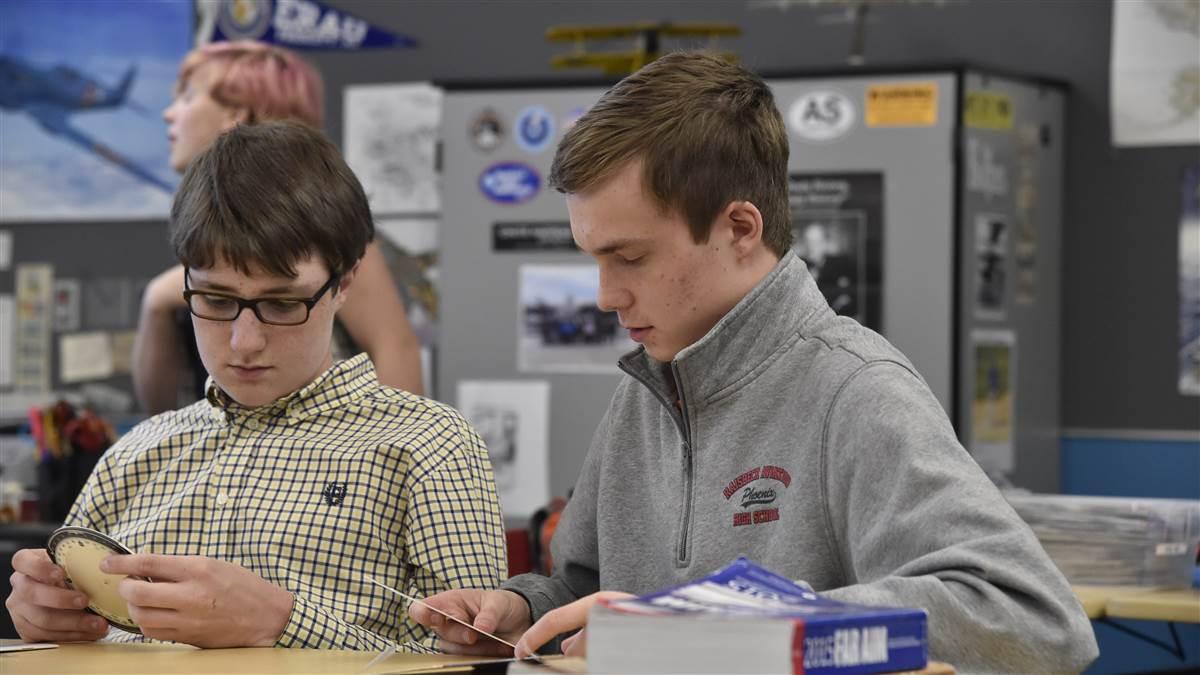
Flight training
If exposing more people to aviation is the first step in growing the pilot population, helping them take to the air is the next. But each year thousands of students start flight training, only to quit without earning a pilot certificate. AOPA research found that students often leave because they don’t get what they expect from the experience, including a solid value, great customer service, a sense of belonging and achievement, and a clear path forward.
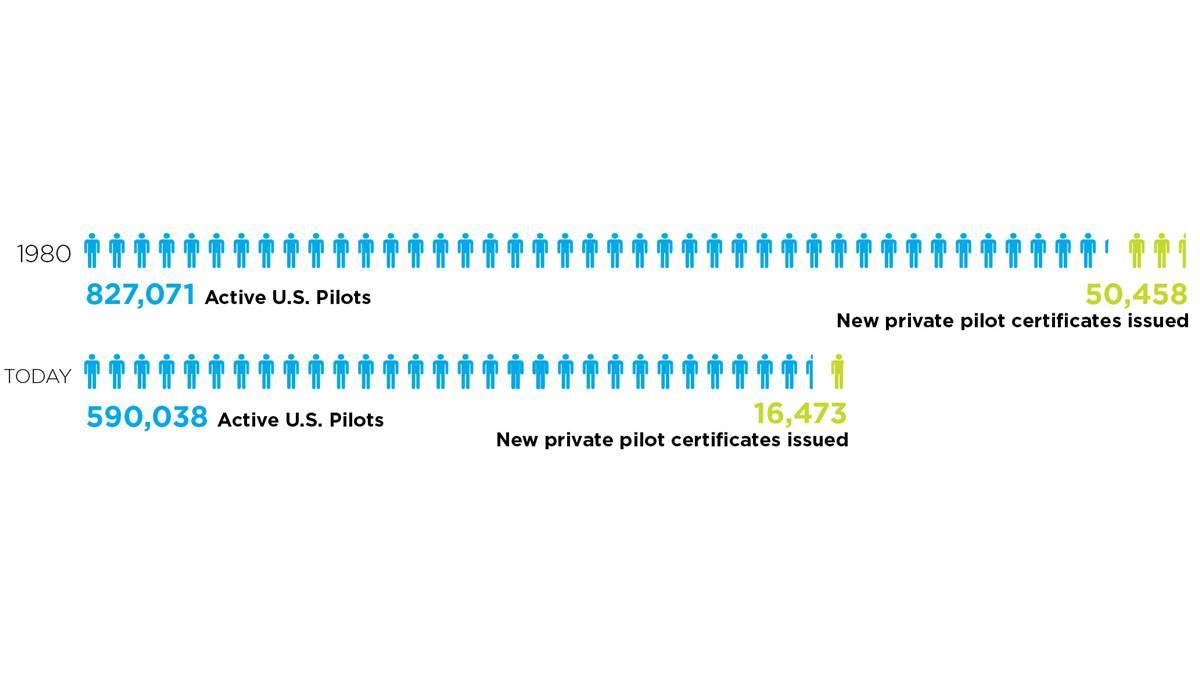
Chris Moser is a flight instructor and former professional educator who runs the Flight Training Initiative. “Students come to flight training energized. We need to keep that energy going and give them reasons to keep coming back to the airport, both during and after training,” he said. “The right kind of training experiences not only help create safe, proficient pilots, they form the basis for growth in our community.”
That’s a big reason flight training is part of the You Can Fly program, and it’s why AOPA will be offering wide-ranging support for training providers. “Schools don’t have to go it alone. Through the AOPA Flight Training initiative, they can connect with one another and address the real-world issues that come with running a business that’s dependent on everything from the weather to the regulatory environment,” he said. “We’re also developing a complete suite of tools that can help schools with every aspect of their operations, from customer service to staff training and marketing, so they can focus on what they do best—teaching people to fly.”
To recognize schools that meet and exceed student expectations, AOPA annually presents the Flight Training Excellence Awards. Students nationwide are encouraged to take the Flight Training Poll and answer questions about their training experiences. This year the poll received more than 11,000 responses, setting a new record. Schools with high completion rates and great reviews from their students receive awards and are encouraged to mentor other schools that want to emulate their success.
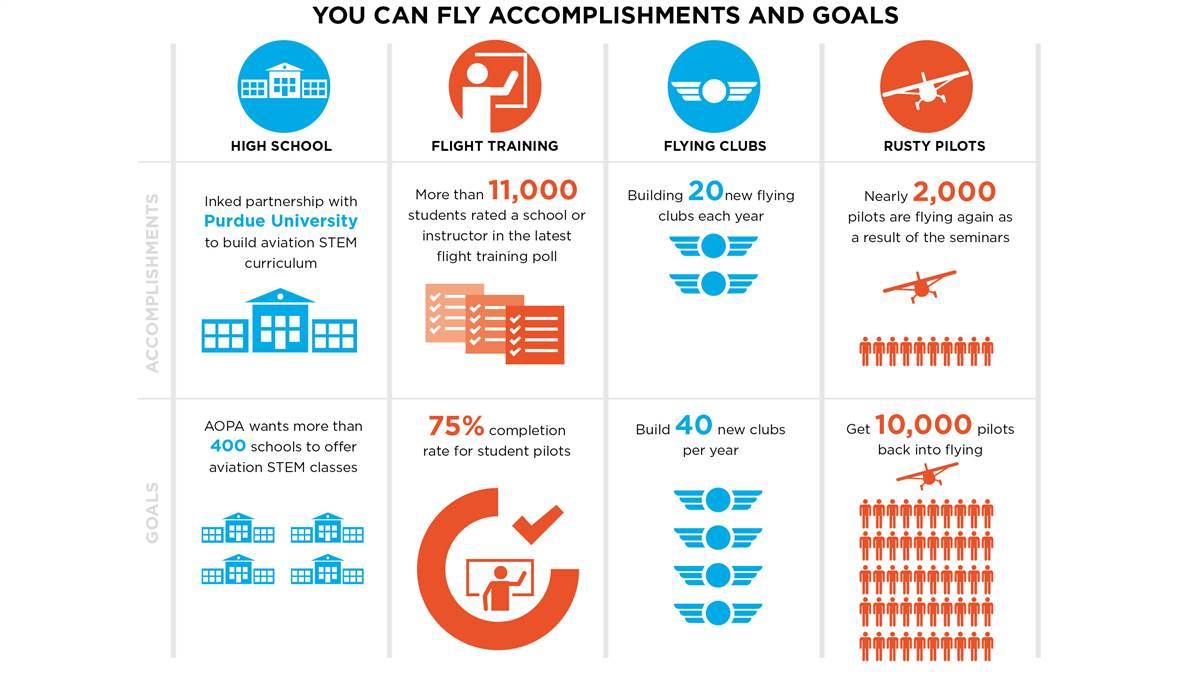
Flying clubs
If high schools give new people exposure to aviation and flight training institutions give them the skills to fly, then flying clubs give them both the means and reason to fly often. Clubs not only provide affordable access to aircraft, they are community hubs where pilots can meet to learn from one another and share their love of flying. Whether it’s weekend fly-outs, hangar parties, or safety seminars, clubs give pilots—and their nonflying family members—a reason to go to the airport and fly. Many clubs offer members hourly rates much lower than typical aircraft rentals, plus the flexibility to take an airplane out for an hour or a week.
AOPA takes a hands-on approach to helping new clubs get started and existing clubs spread their wings. The AOPA Flying Club Network includes some 700 clubs nationwide and it’s helping launch more clubs all the time. The Flying Club Finder tool lets pilots search for clubs near them, and allows them to sort clubs based on the type of aircraft they operate and the facilities they offer.
The network provides a wide range of online tools and information, covering everything from legal requirements and bylaws to choosing an airplane and selecting officers. AOPA Ambassadors are available to help with one-on-one, in-person guidance in some areas. Those ambassadors helped launch the Sedona Flying Club and 19 others this year.
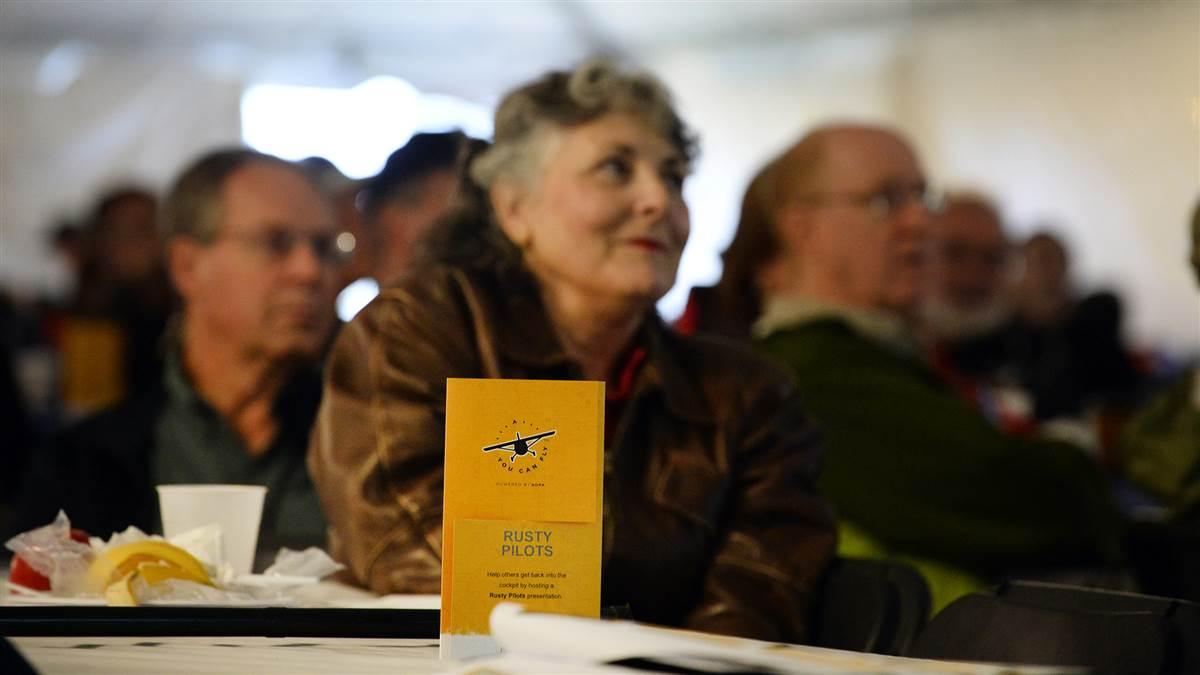
Rusty Pilots
Every year thousands of pilots “take a break” from flying. Most of them intend to come back when the time and circumstances are right, but for some that break can stretch on for years or decades. The AOPA Rusty Pilots Initiative is making it easy for pilots to get back in the cockpit, no matter how long they’ve been away.
Working in partnership with local flight schools, AOPA puts on seminars—more than 150 this year—that give pilots a refresher on everything from airspace to flight planning to communication. The three-hour seminars count toward the ground portion of the flight review. And, since most events are held at flight schools or flying clubs, participants often sign up on the spot for some air time with a flight instructor. Seminars are free to the hosting organization and to AOPA members. AOPA provides marketing support, a presenter, slideshow, and handouts and take-home materials.
AOPA estimates there are about 500,000 lapsed pilots under 70 years oldThis year, more than 40 percent of lapsed pilots attending a Rusty Pilots seminar have gone on to complete a flight review—and that’s after having been out of flying for an average of seven years. “That translates to thousands of pilots who are flying again as a direct result of the Rusty Pilots initiative,” Pribyl said. “Next year we’re going to take it even further to provide support for pilots coming back after third class medical reform. We’re going to double the number of seminars available to 300.”
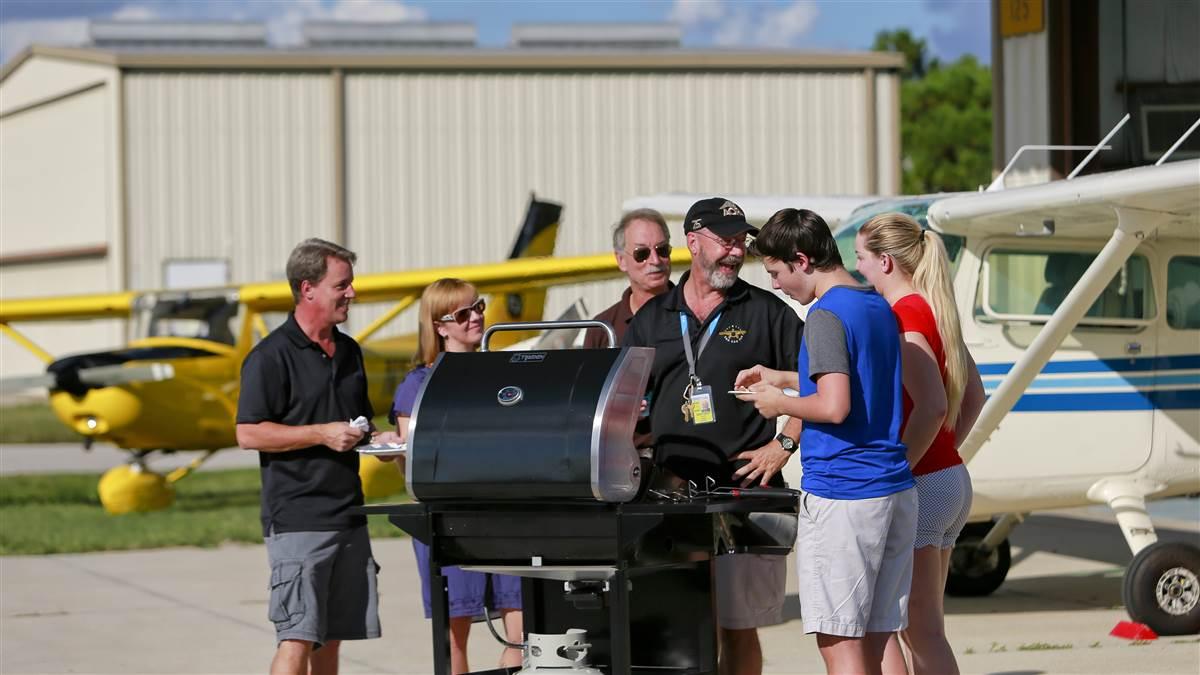
Infrastructure
Developing top-notch aviation STEM curricula, creating tools for flight schools, providing hands-on support to flying clubs, and delivering hundreds of seminars each year comes with a price tag. And philanthropists, seeing You Can Fly’s early achievements, are stepping up to contribute. One of You Can Fly’s notable accomplishments this year came in the form of a fundraising challenge. One donor, who prefers to remain anonymous, said if AOPA could raise $1 million in 90 days for You Can Fly, he would give $1 million to match it. AOPA accomplished that goal when it raised $1,104,000 from about 35 different contributors to secure the match.
Of course, that’s just the beginning. It took years for the pilot population to decline, and it won’t be rebuilt overnight. “It will take thousands of pilots, not millions, to reinvigorate GA,” said AOPA President Mark Baker. “Together we can do this. We have to do this.” You Can Fly is a long-term effort and that means it needs long-term support. But as You Can Fly keeps delivering tangible, measurable results—as it gets more people flying and keeps them flying—AOPA believes it will win broad support from the aviation community.
“We believe this is the future of general aviation. When more people fly, GA gets stronger. There is no silver bullet that’s going to turn the pilot population around,” Pribyl said. “But we’re starting to move the needle.”
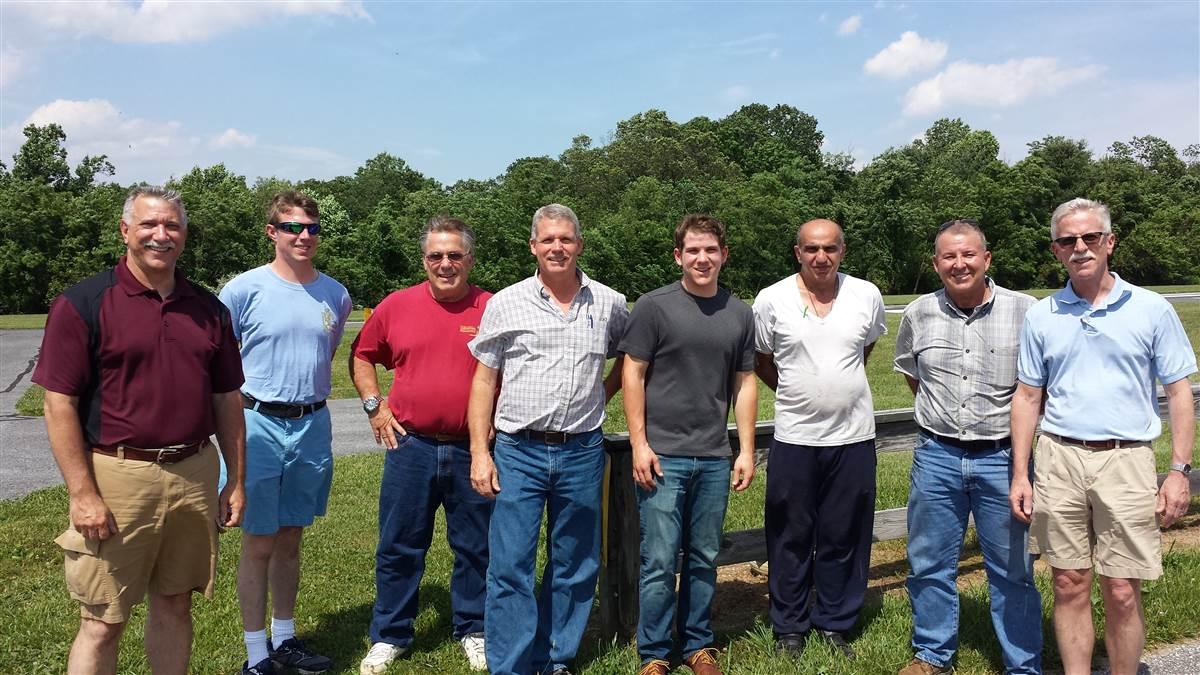 Walter Tegeler flies from Clearview Airpark, a grassroots airport in Maryland with a runway so short they boast about it on coffee mugs. Tegeler heard about You Can Fly at Sun ’n Fun and, after receiving encouragement from AOPA President and CEO Mark Baker, he was convinced Clearview could benefit from a flying club—and he was the person to make it happen. Just a few months later, the Clearview Flying Club is up and running with a Cessna 150 on a leaseback arrangement, more than a dozen members, and plenty of community-building social events. The club has also hosted a Rusty Pilots seminar and “Max Fun, Min Cost,” a seminar on the benefits of flying clubs. “We are trying to bring back the heyday of aviation by getting younger people out to learn to fly and older pilots back in the skies,” Tegeler said.
Walter Tegeler flies from Clearview Airpark, a grassroots airport in Maryland with a runway so short they boast about it on coffee mugs. Tegeler heard about You Can Fly at Sun ’n Fun and, after receiving encouragement from AOPA President and CEO Mark Baker, he was convinced Clearview could benefit from a flying club—and he was the person to make it happen. Just a few months later, the Clearview Flying Club is up and running with a Cessna 150 on a leaseback arrangement, more than a dozen members, and plenty of community-building social events. The club has also hosted a Rusty Pilots seminar and “Max Fun, Min Cost,” a seminar on the benefits of flying clubs. “We are trying to bring back the heyday of aviation by getting younger people out to learn to fly and older pilots back in the skies,” Tegeler said.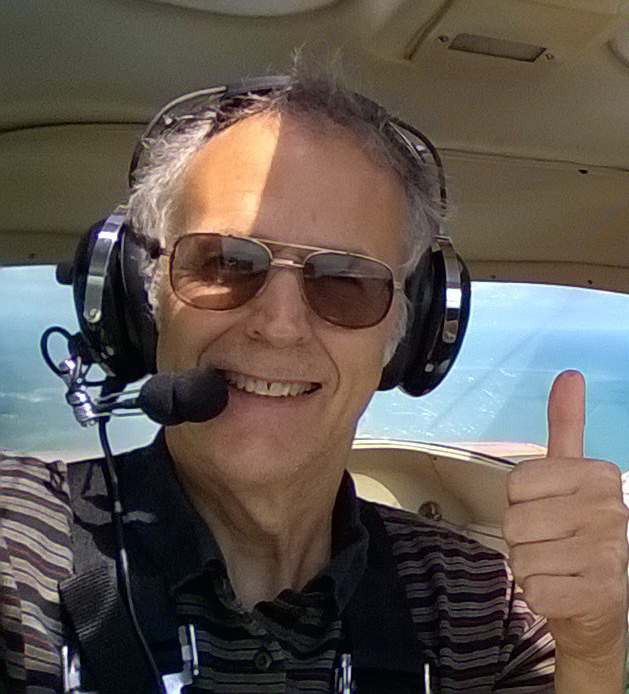 Indiana-based lawyer Ros Stovall has taken advantage of two of You Can Fly’s four major initiatives. He has recently renewed his flying passion, “which lay fallow for 30 years while raising a family,” he said. After attending a Rusty Pilots seminar at one of AOPA’s regional fly-ins, Stovall is now back in the left seat and has joined Flying Engineers, a flying club with a Cessna 150 based at Indianapolis Regional Airport. Stovall said he recently celebrated his return to aviation by flying with his first passenger in 30 years—his daughter, who was also celebrating her thirtieth birthday.
Indiana-based lawyer Ros Stovall has taken advantage of two of You Can Fly’s four major initiatives. He has recently renewed his flying passion, “which lay fallow for 30 years while raising a family,” he said. After attending a Rusty Pilots seminar at one of AOPA’s regional fly-ins, Stovall is now back in the left seat and has joined Flying Engineers, a flying club with a Cessna 150 based at Indianapolis Regional Airport. Stovall said he recently celebrated his return to aviation by flying with his first passenger in 30 years—his daughter, who was also celebrating her thirtieth birthday.
